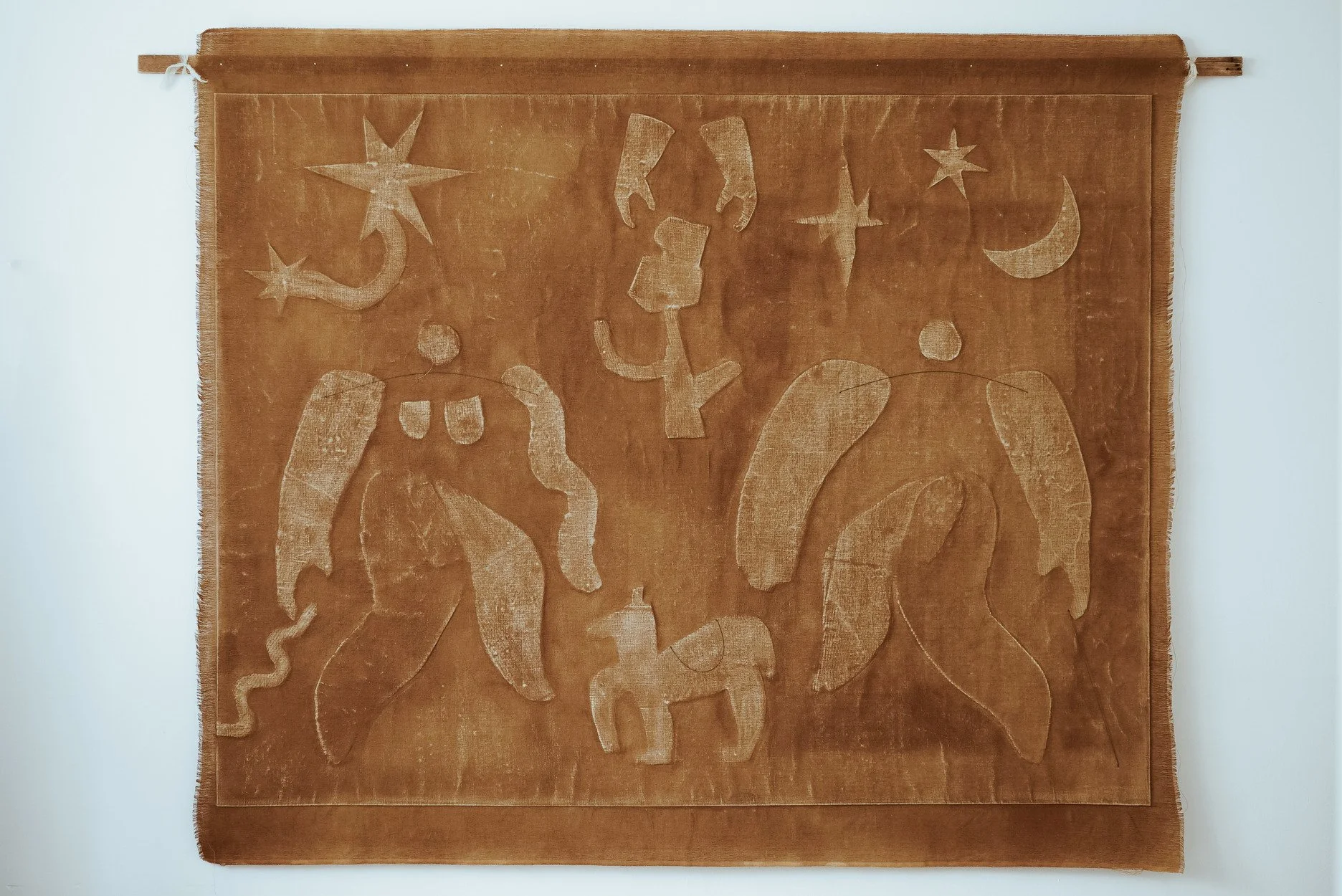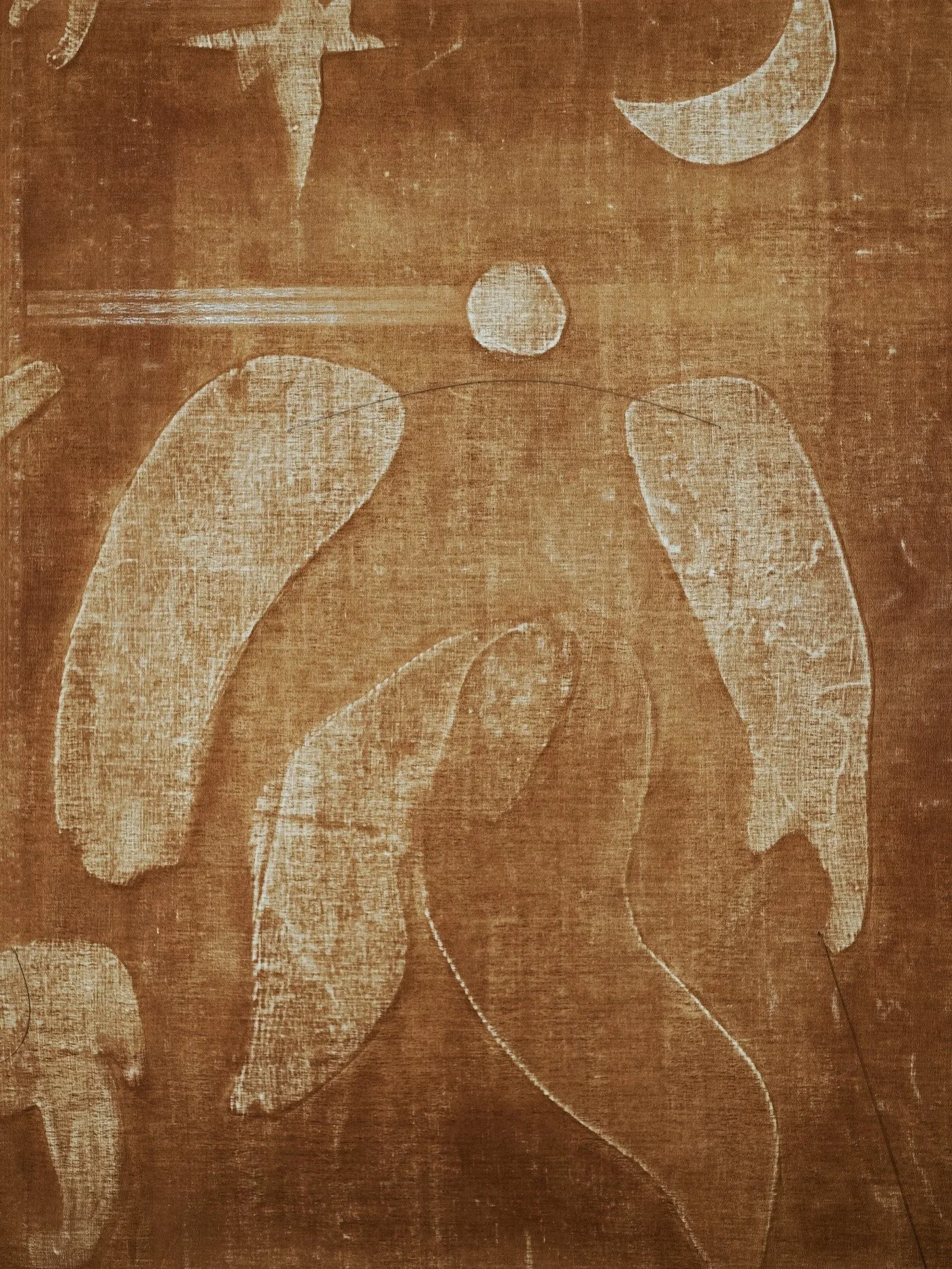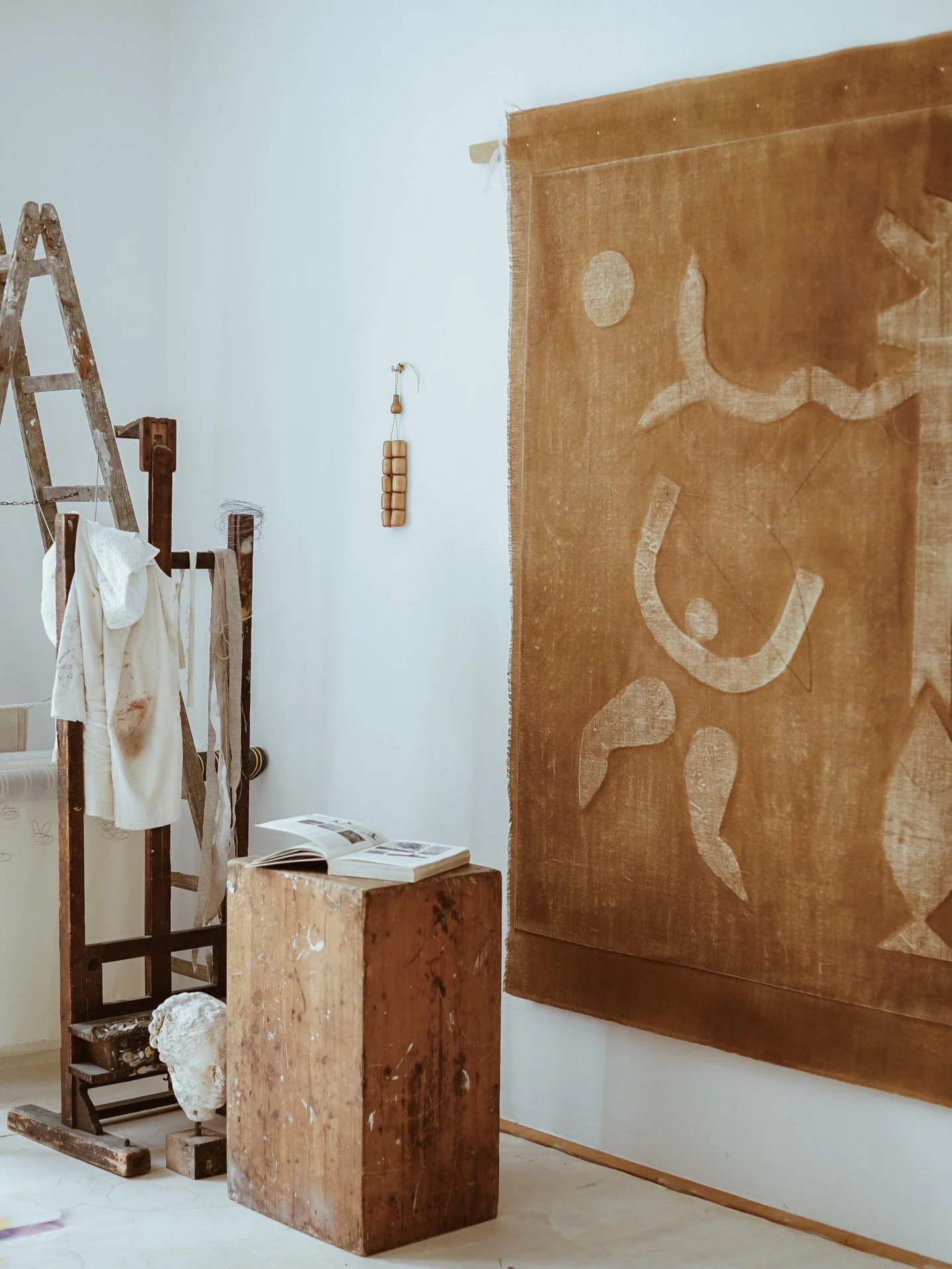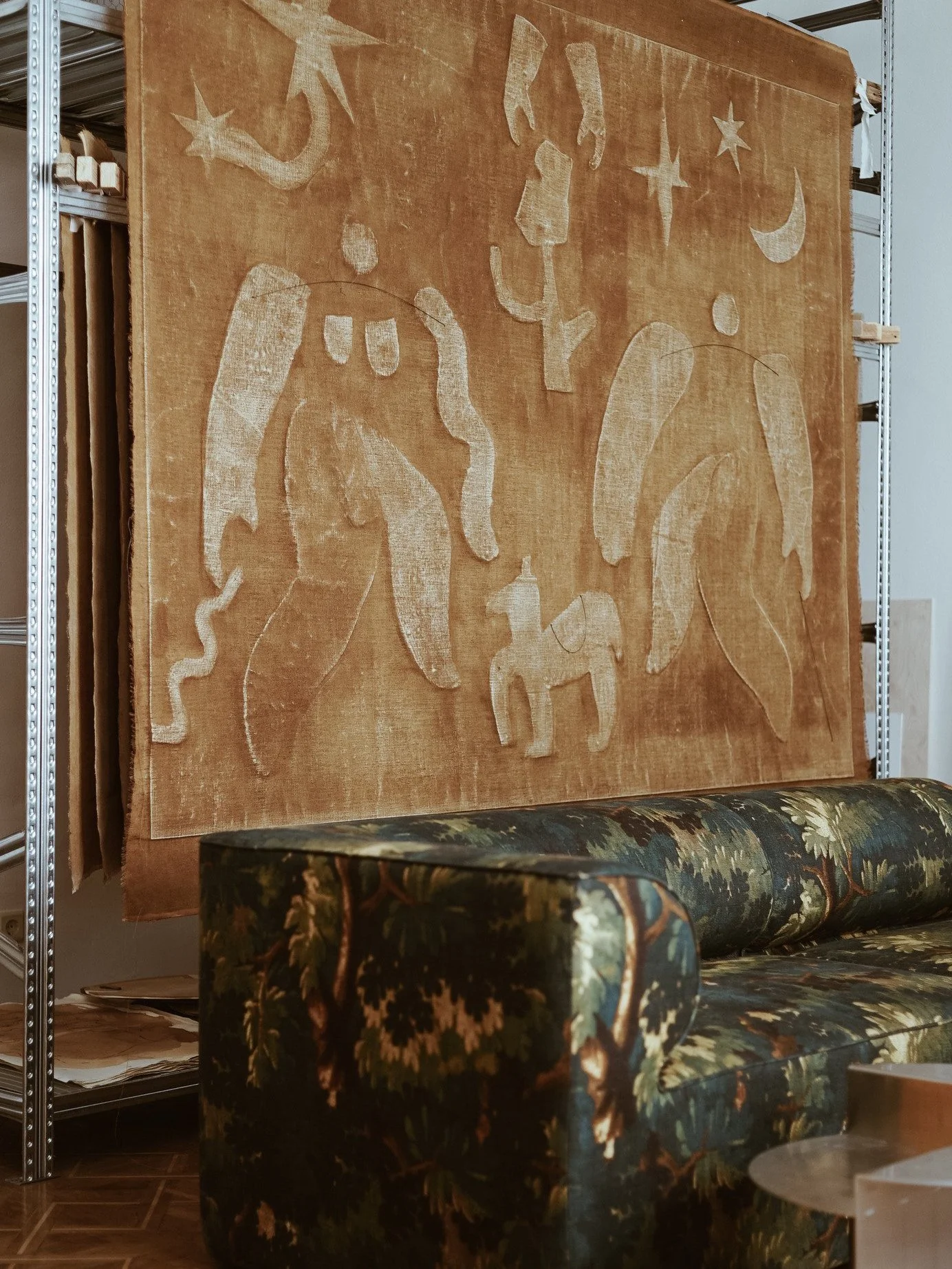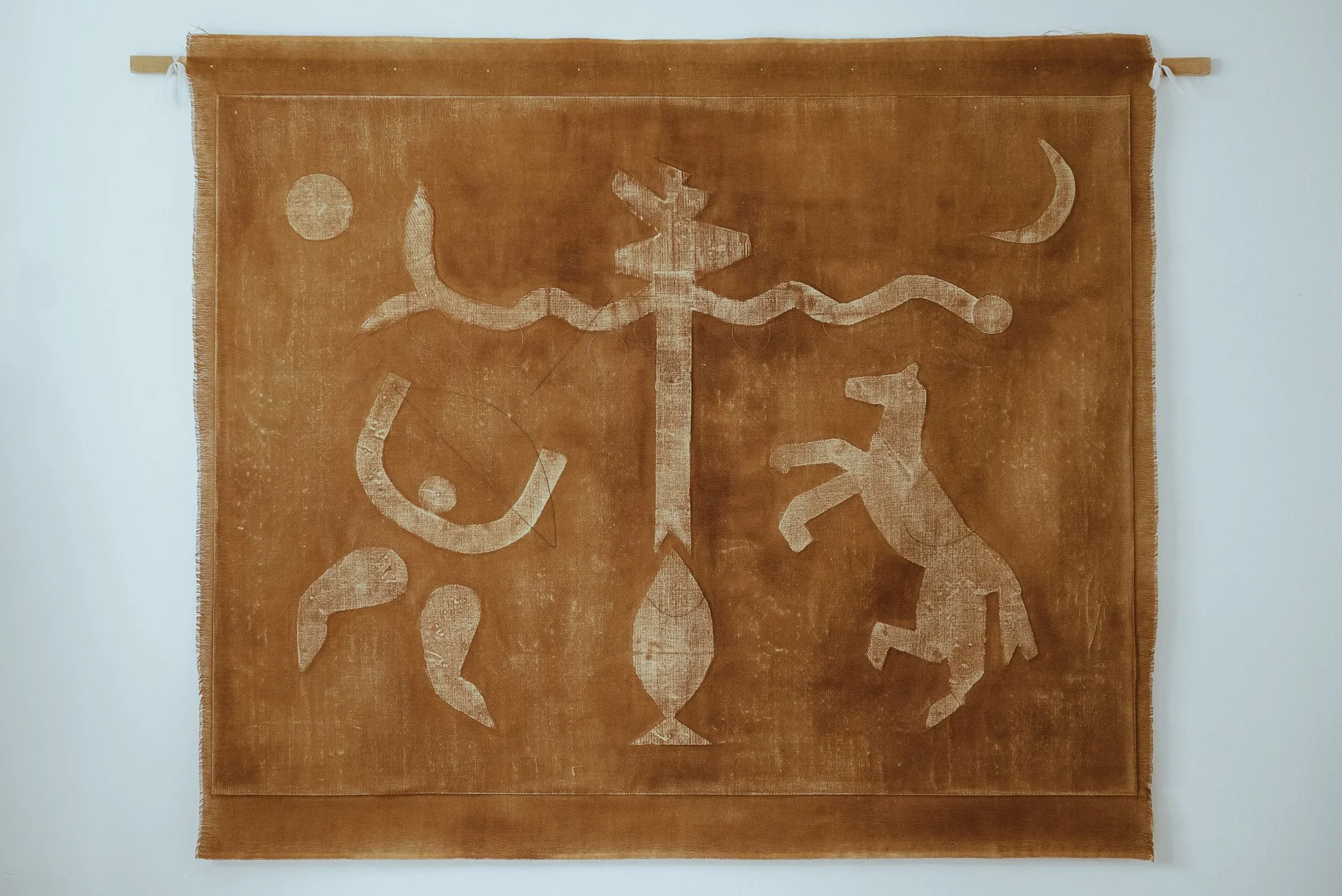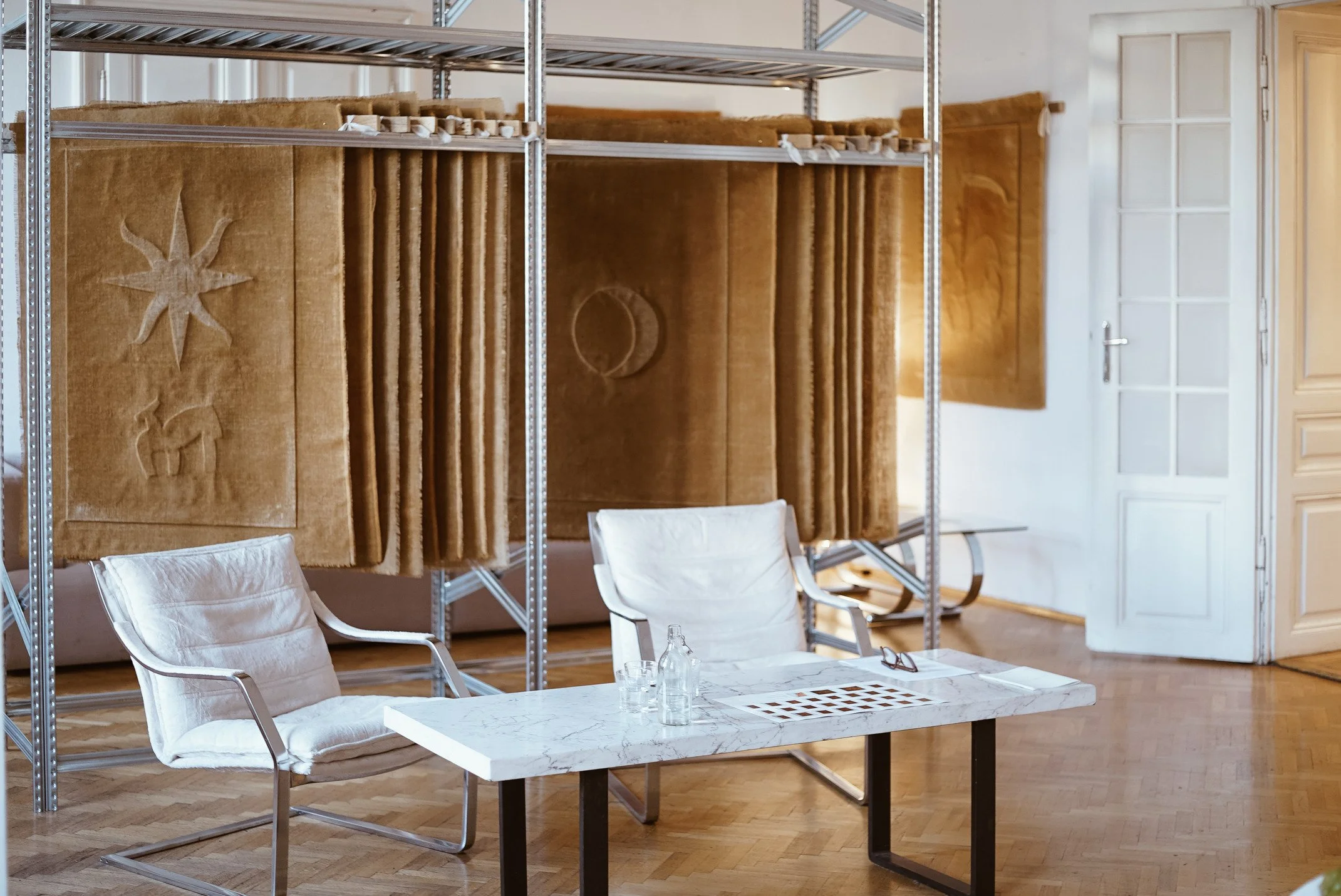AC2
OPEN PALM OF DESIRE
CATALOGUE"Open Palm of Desire," features 24 textile artworks crafted over two years. Inspired by Tarot's rich symbolism, GAÏA’s work weaves together ancient and contemporary themes, inviting introspection and universal connection. Organised around the 22 Major Arcana Tarot cards, with two grand textile murals exploring the Tree of Life, GAÏA employs her innovative “contemporary mummies” technique, using shellac and raw linen. Her fascination with murals, one of the oldest art forms, is evident as she reinterprets this ancient medium in a contemporary context, blending symbolism with the aesthetic of folk art. "Open Palm of Desire" is not just a mystical art experience but an immersive journey that bridges ancient wisdom and modern artistry.

TEMPERANCE, LINEN AND SHELLAC, 112X146 CM, 2024
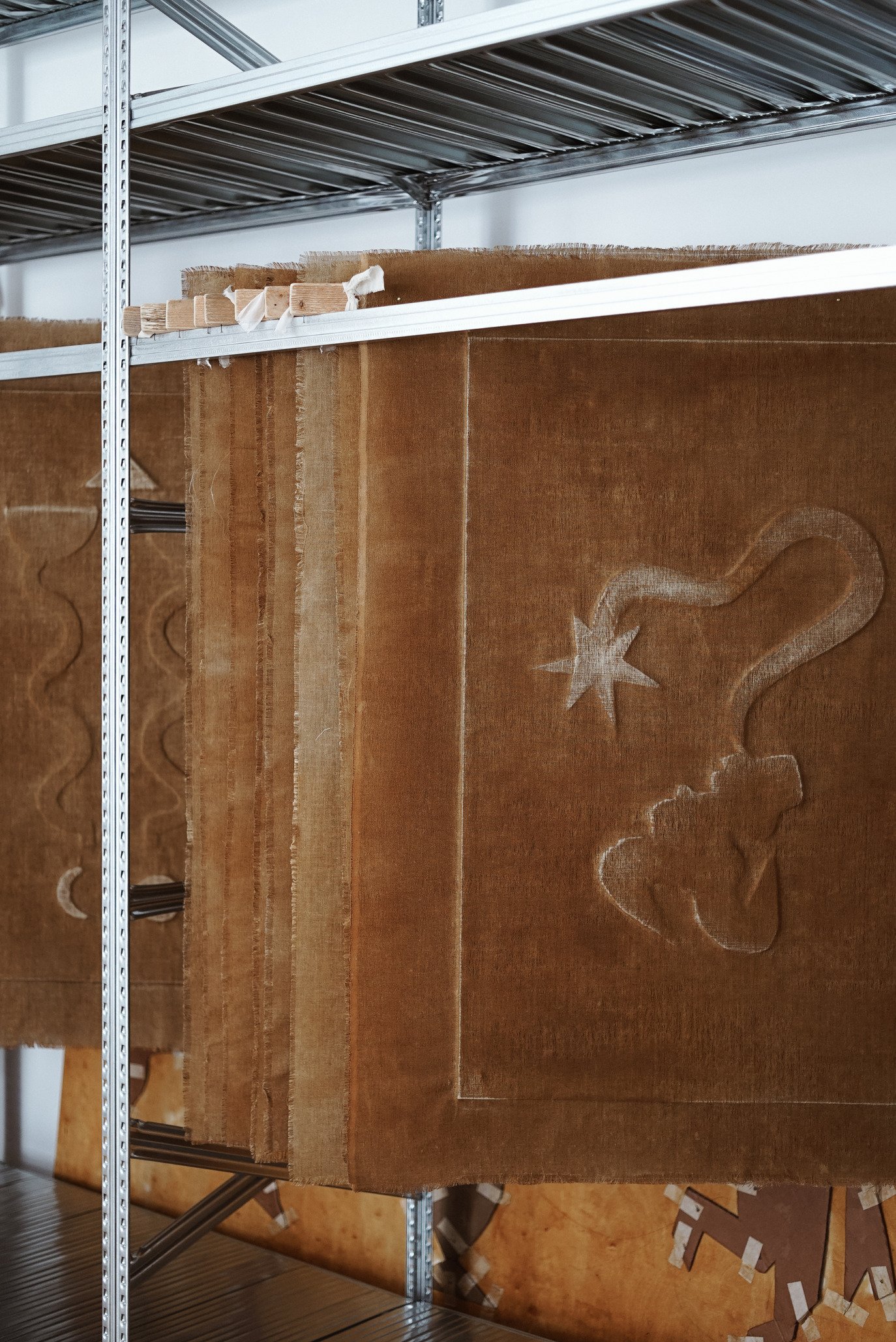
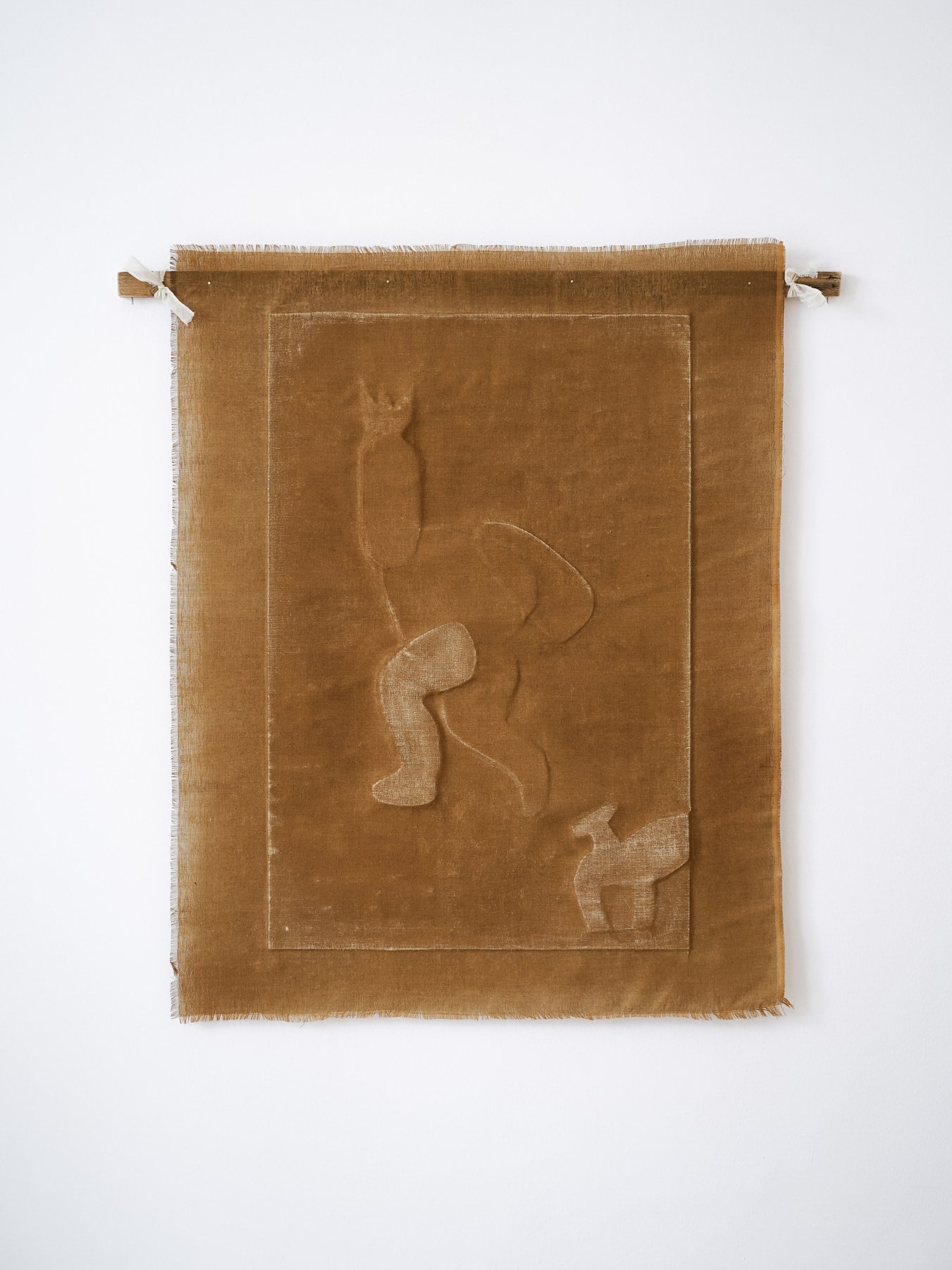
FOOL, LINEN AND SHELLAC, 112X143 CM, 2024
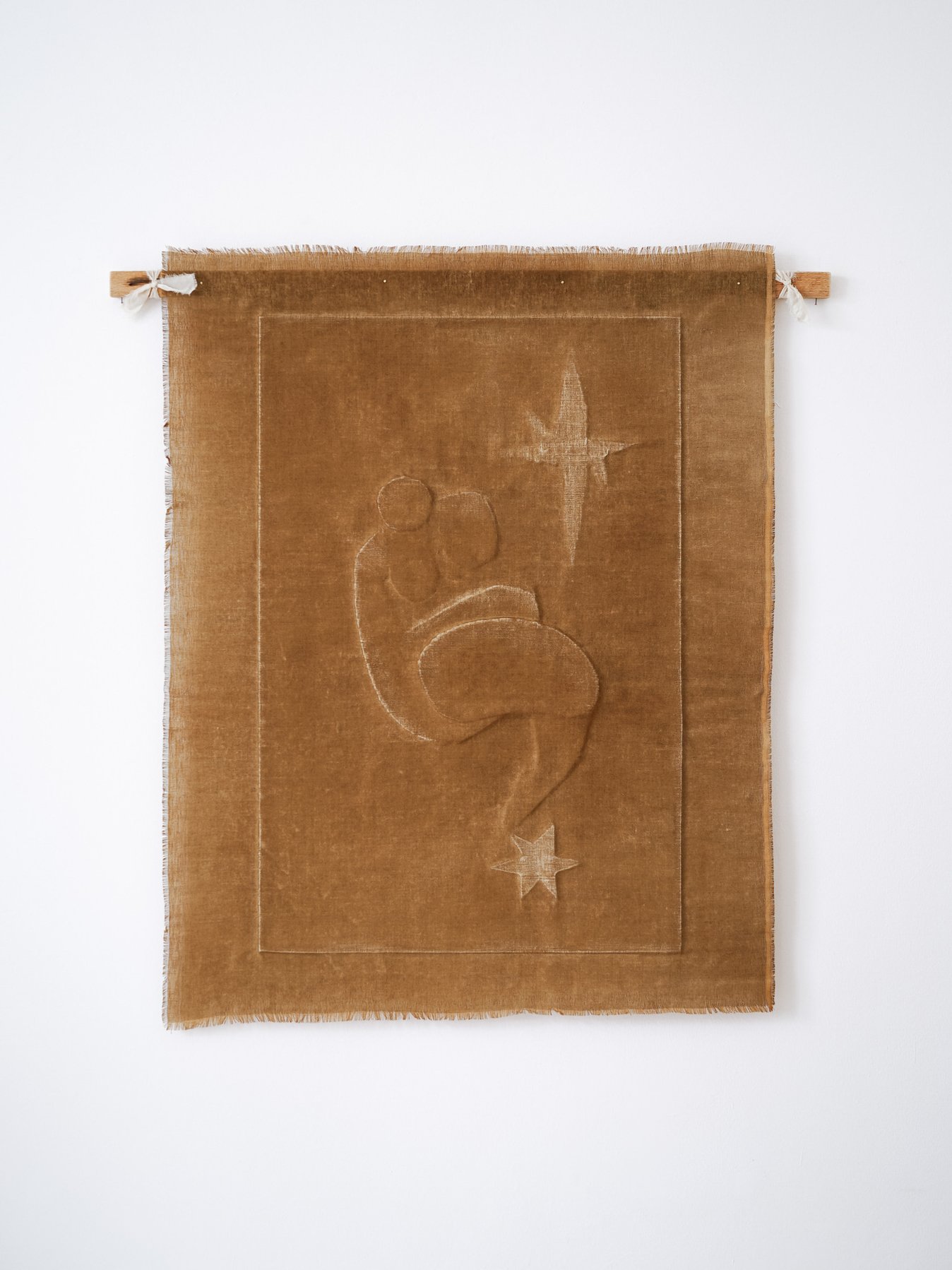
WORLD, LINEN AND SHELLAC, 112X143 CM, 2024

TOWER - HOUSE OF GOD, LINEN AND SHELLAC, 112X146 CM, 2024

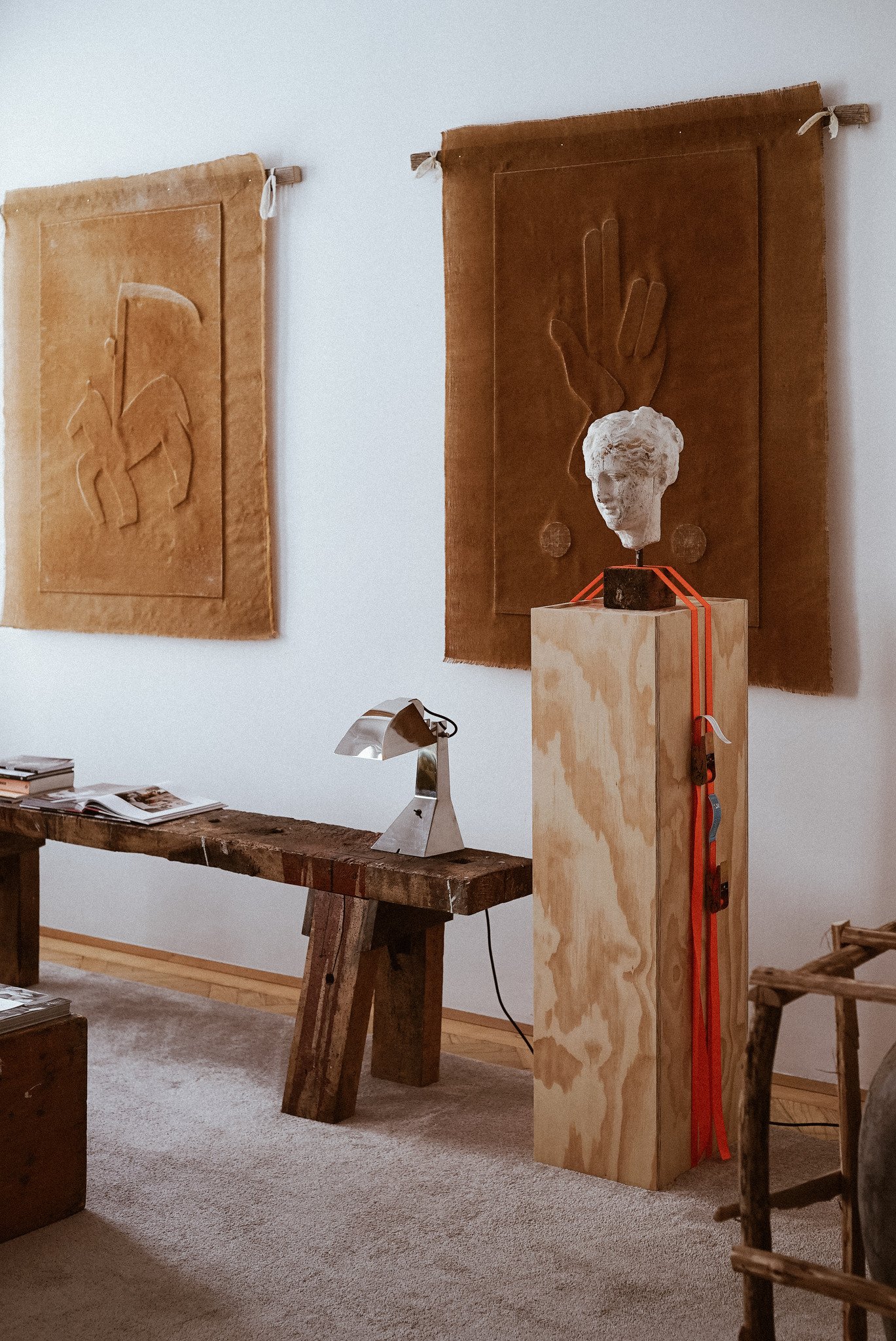
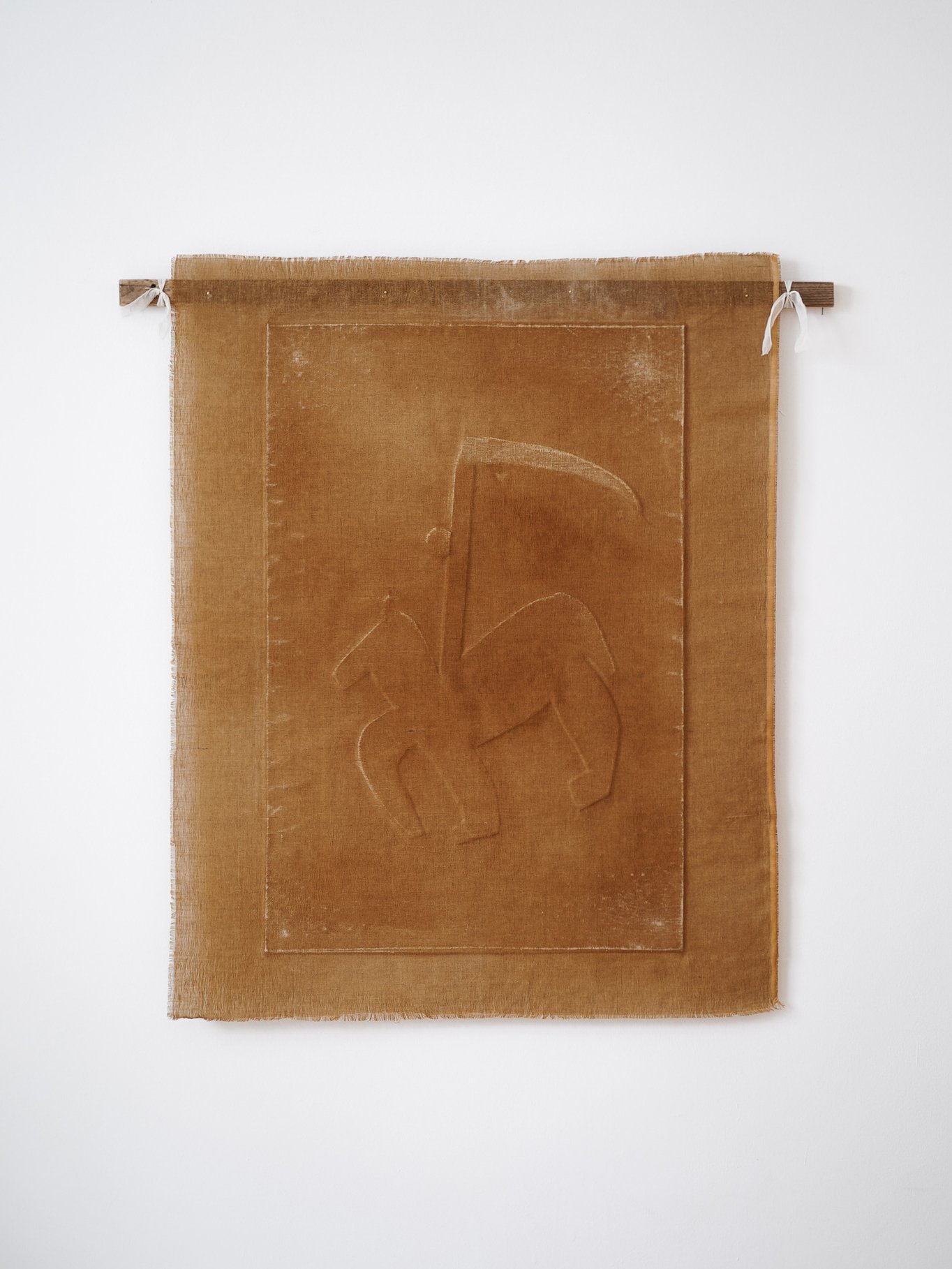
DEATH-REBIRTH, LINEN AND SHELLAC, 112X142 CM, 2024

WHEEL OF FORTUNE, LINEN AND SHELLAC, 112X146 CM, 2024
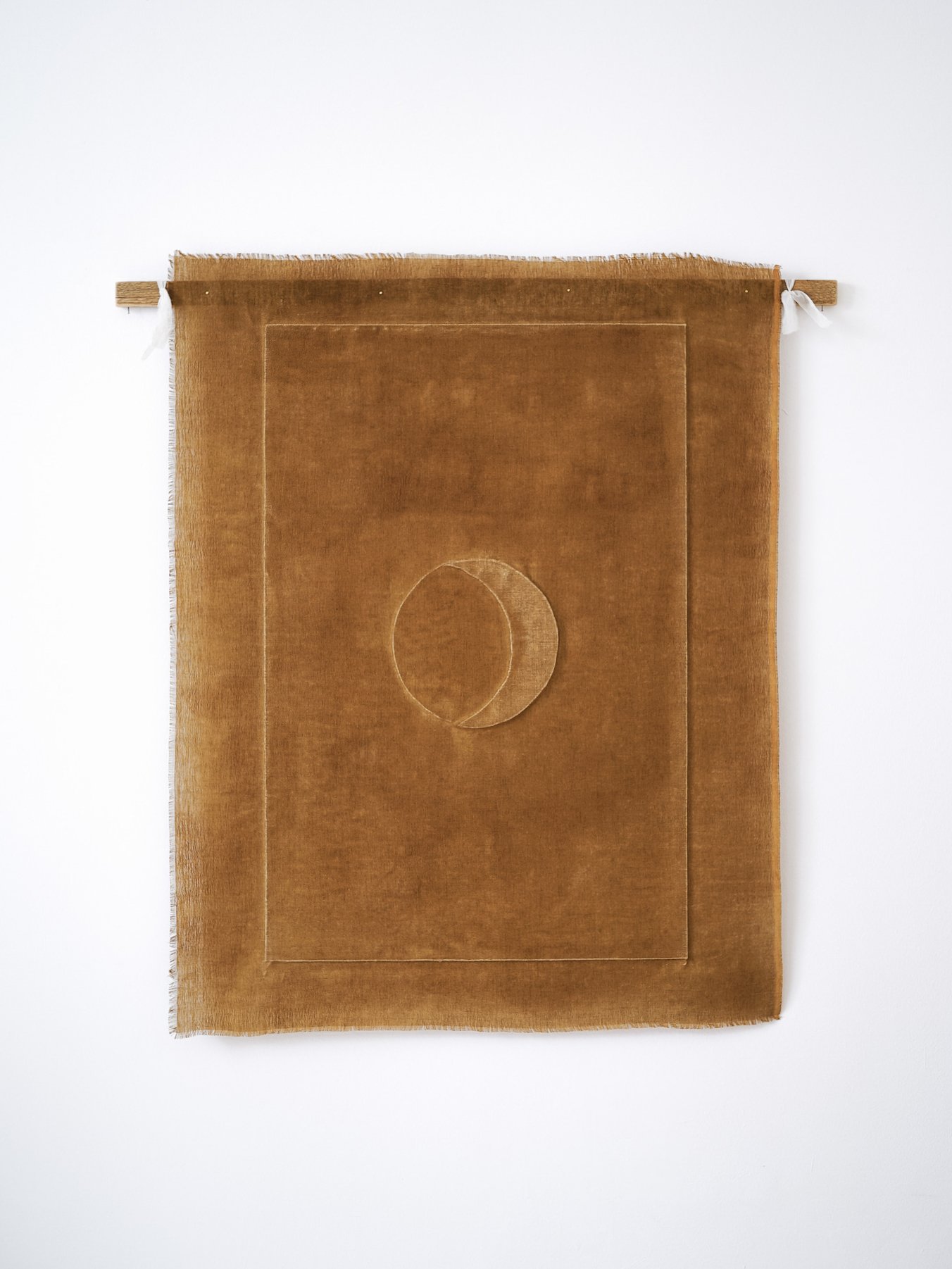
MOON, LINEN AND SHELLAC, 112X142 CM, 2024
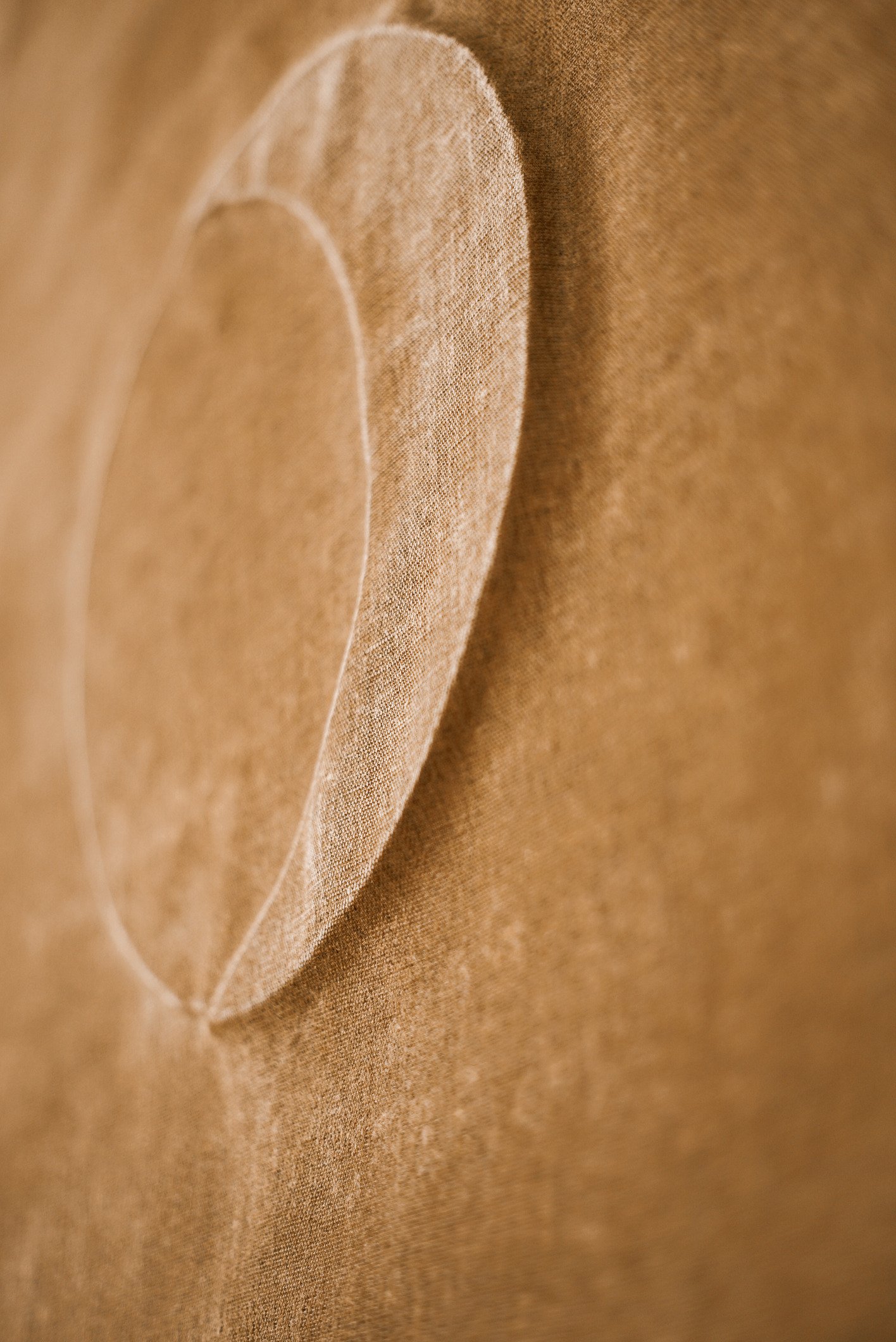
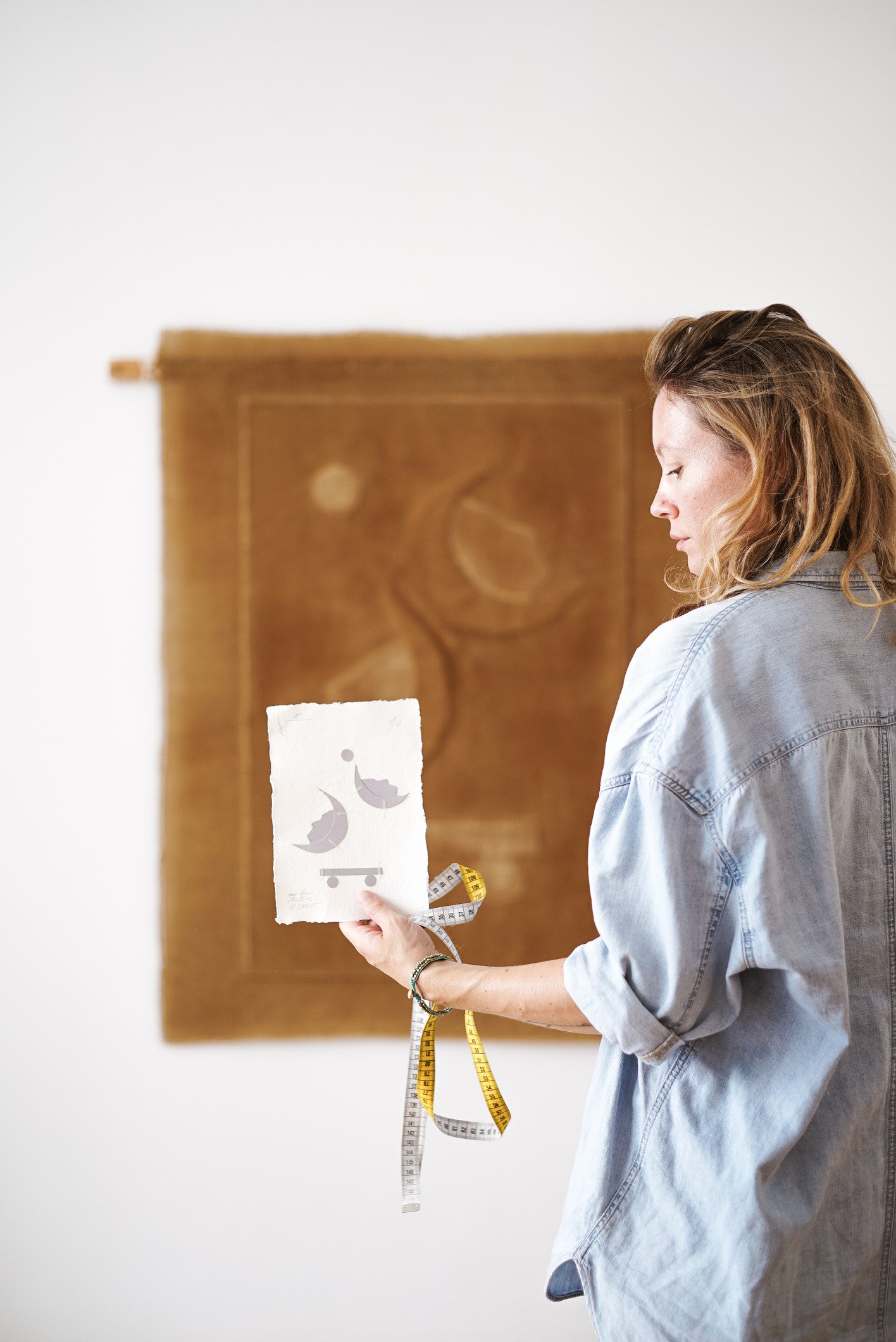

SUN, LINEN AND SHELLAC, 112X142 CM, 2024
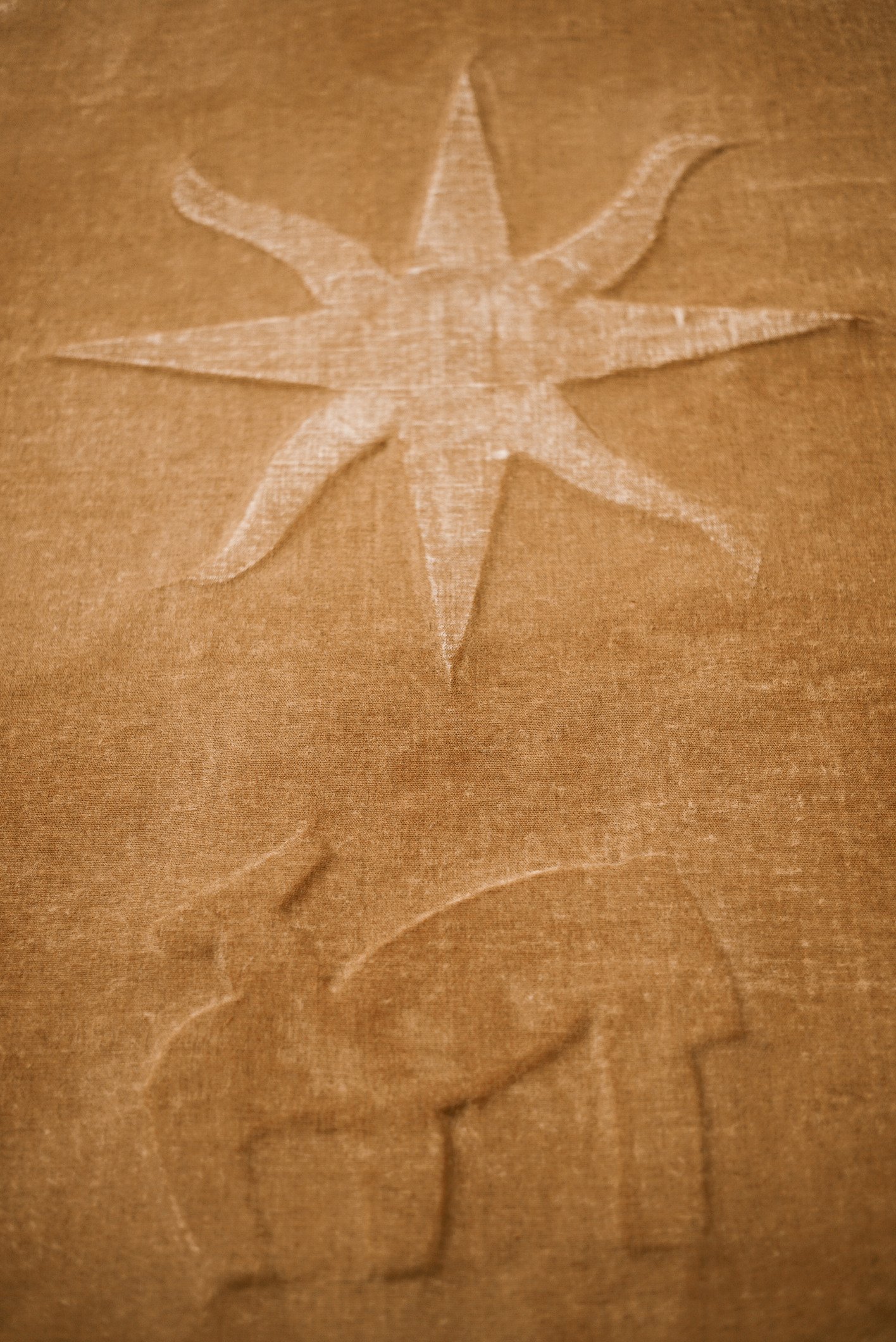

STAR, LINEN AND SHELLAC, 112X143 CM, 2024

STRENGTH, LINEN AND SHELLAC, 112X142 CM, 2024

CHARIOT, LINEN AND SHELLAC, 112X144 CM, 2024
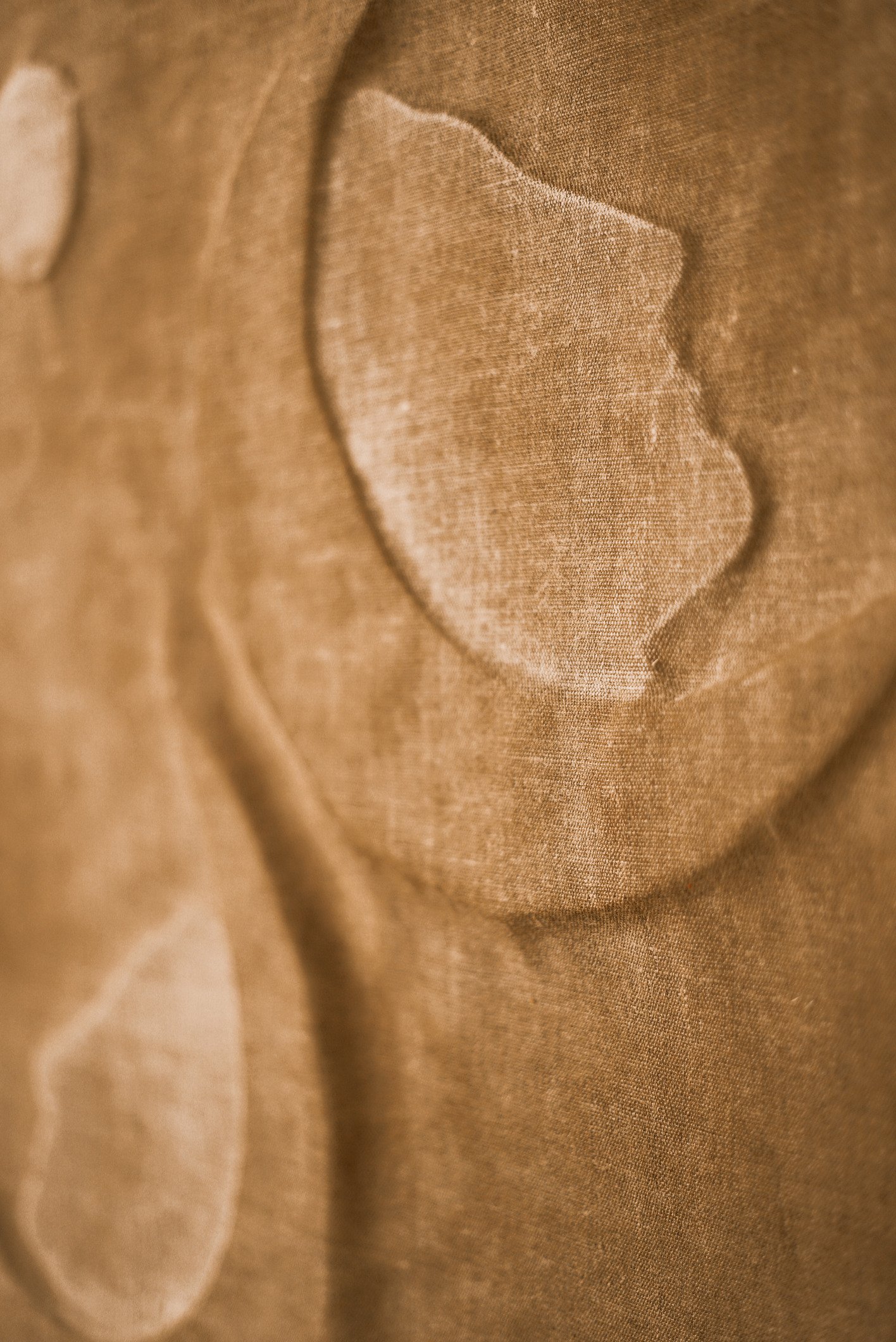

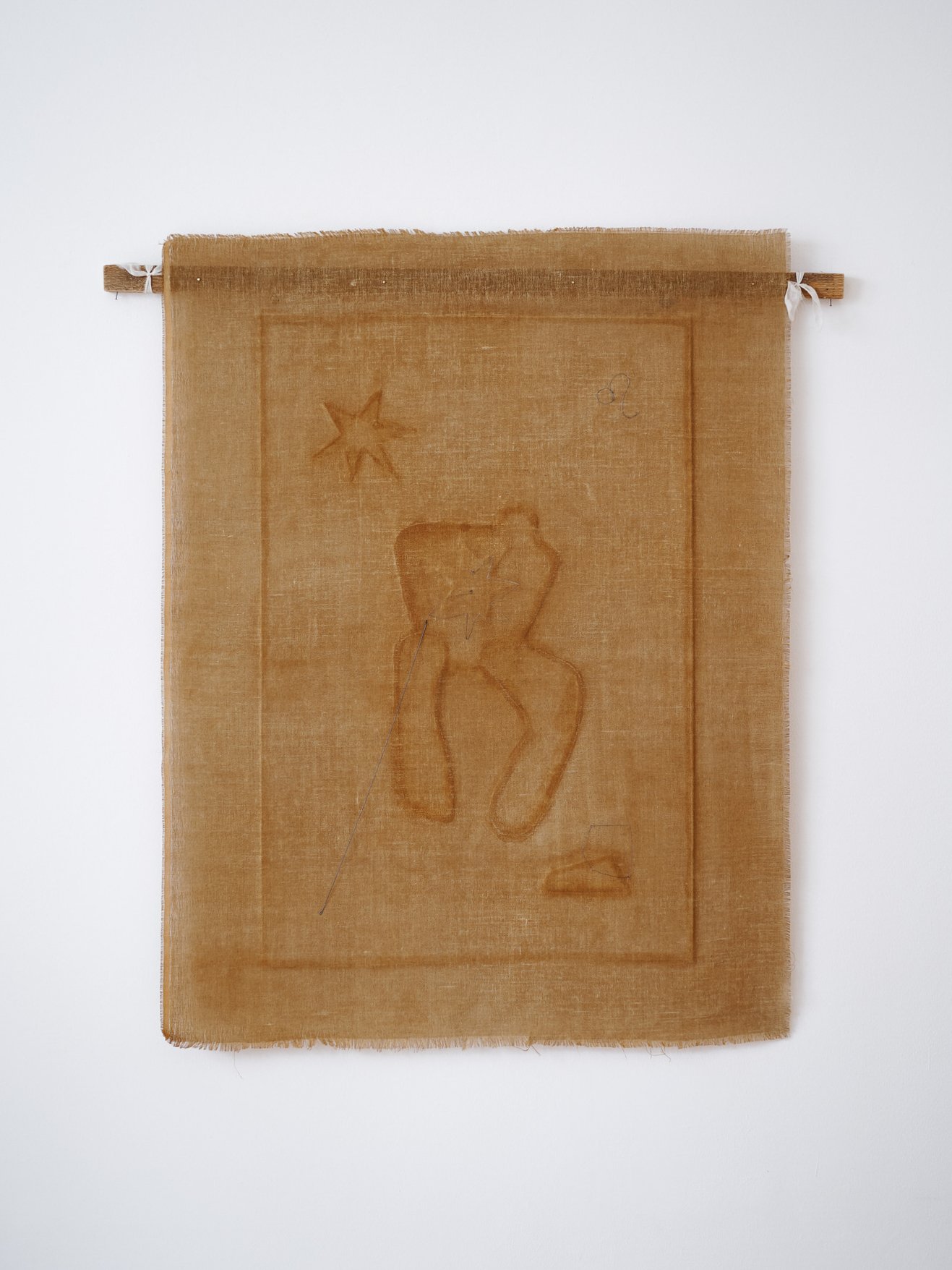
HERMIT (INNER WISDOM), LINEN, SHELLAC, METAL WIRE, 112X145 CM, 2024

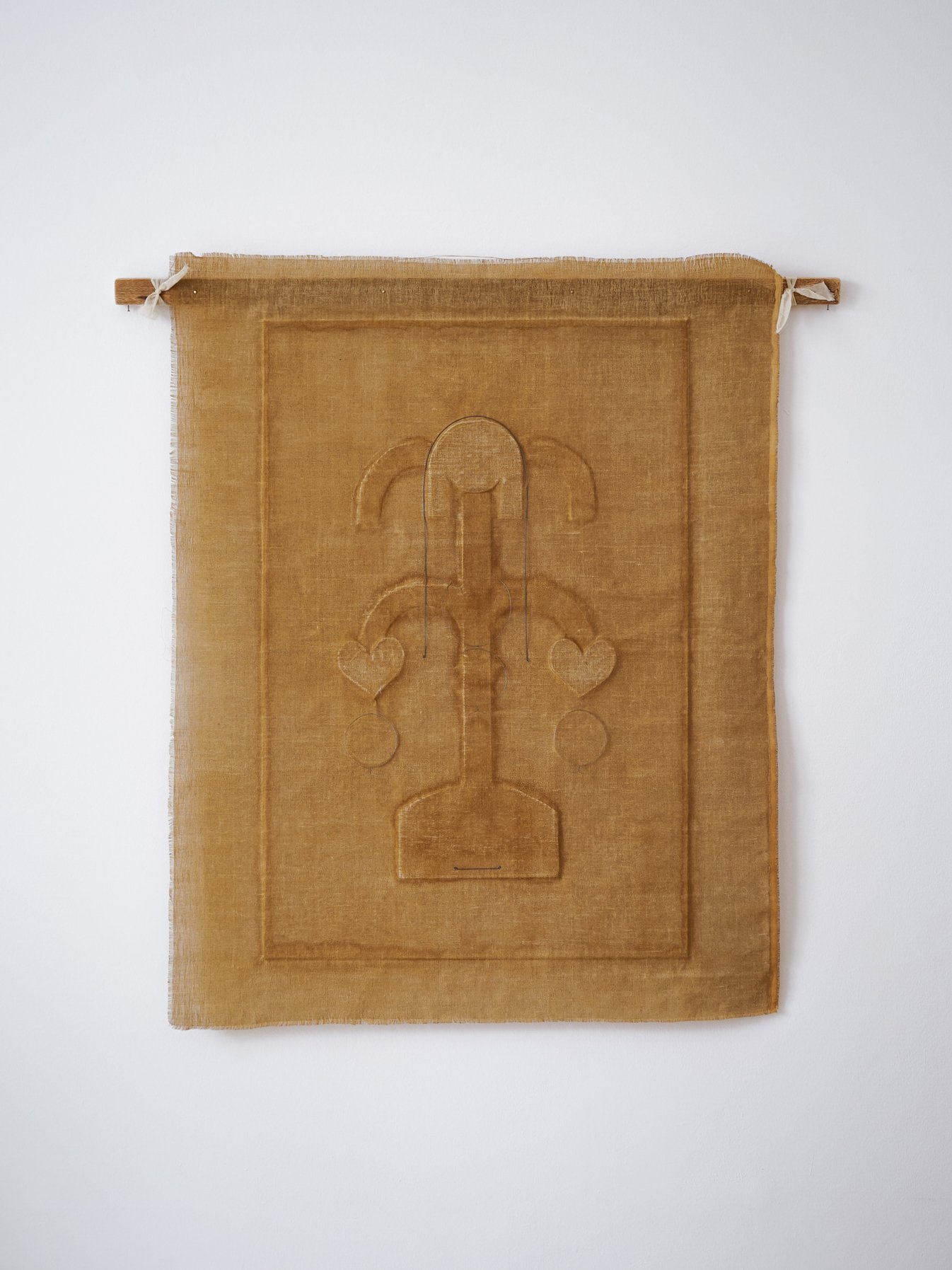
LOVERS, LINEN, SHELLAC, METAL WIRE, 112X141 CM, 2024
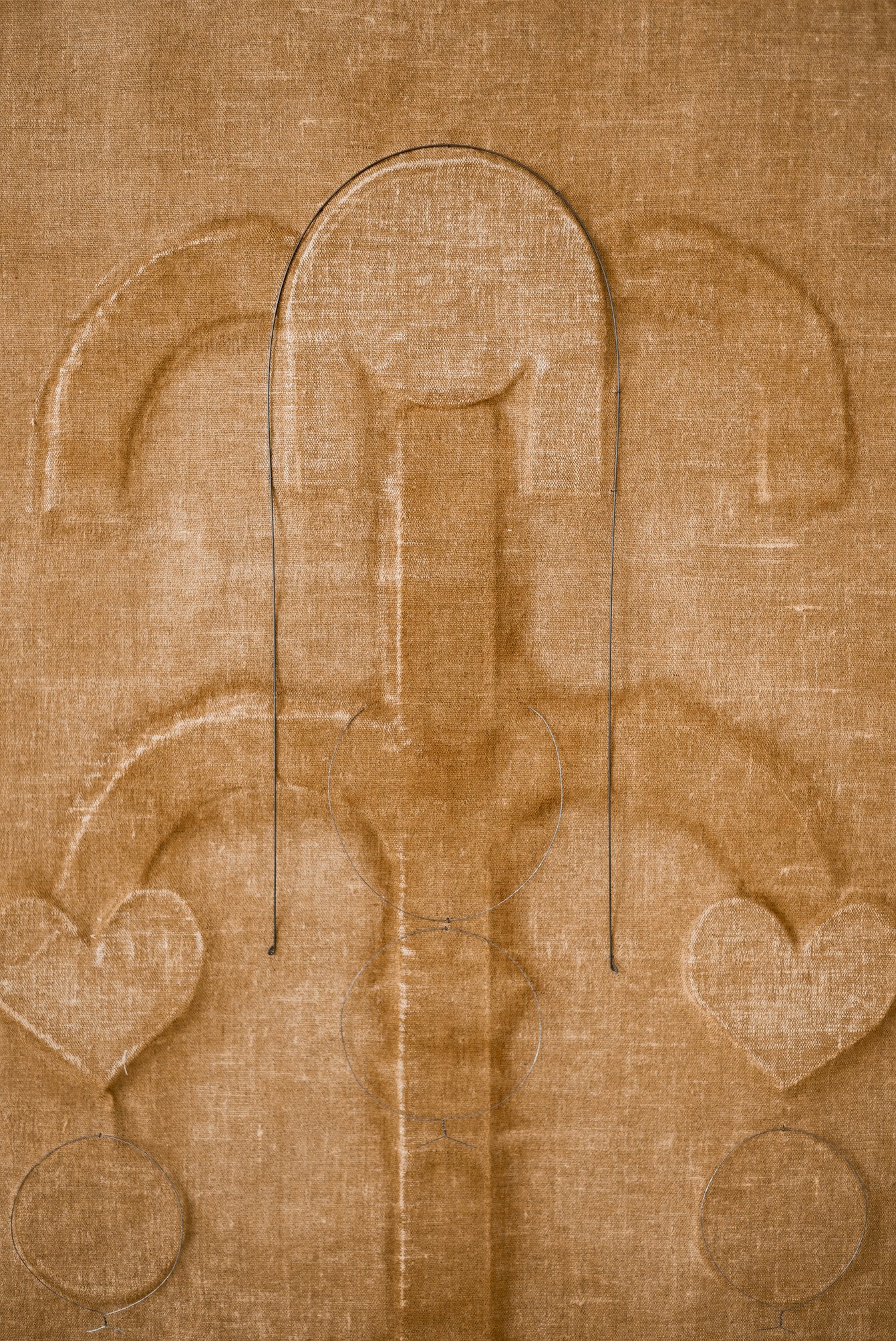

MAGICIAN, LINEN AND SHELLAC, 112X146 CM, 2024

HIEROPHANT, LINEN AND SHELLAC, 112X143 CM, 2024

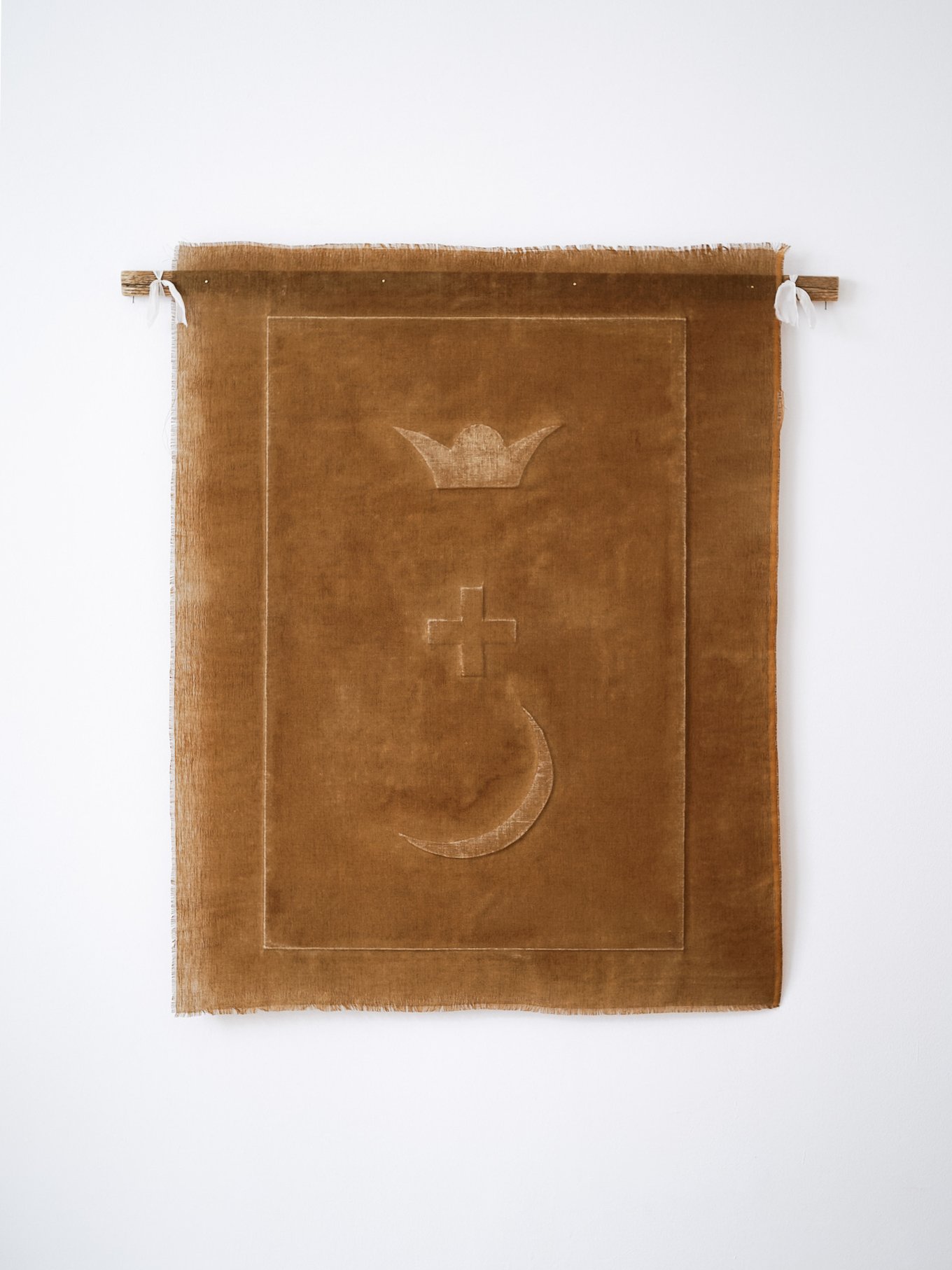
HIGH PRIESTESS, LINEN AND SHELLAC, 112X141 CM, 2024
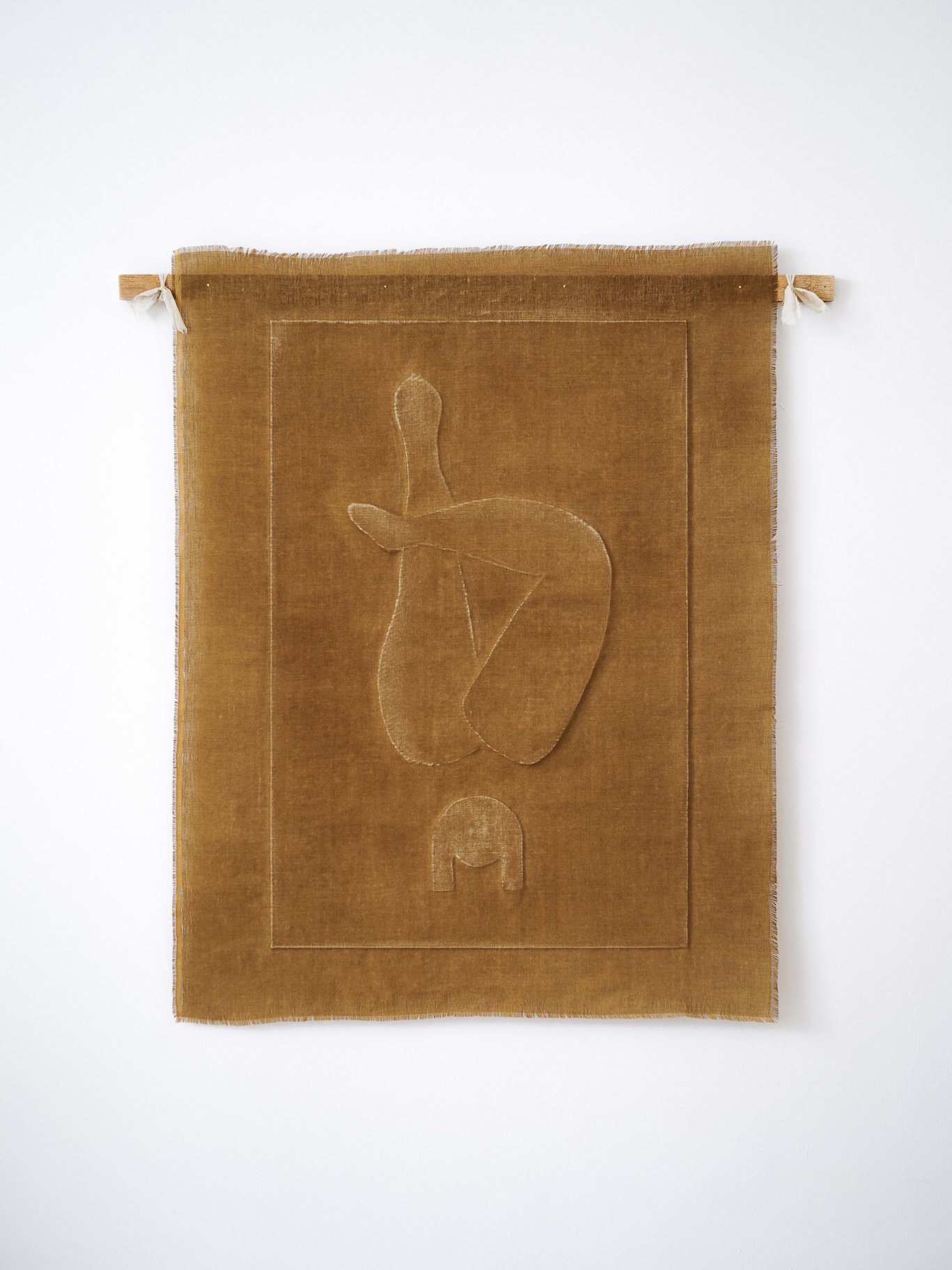
HANGED MAN (ENLIGHTENMENT), LINEN AND SHELLAC, 112X144 CM, 2024
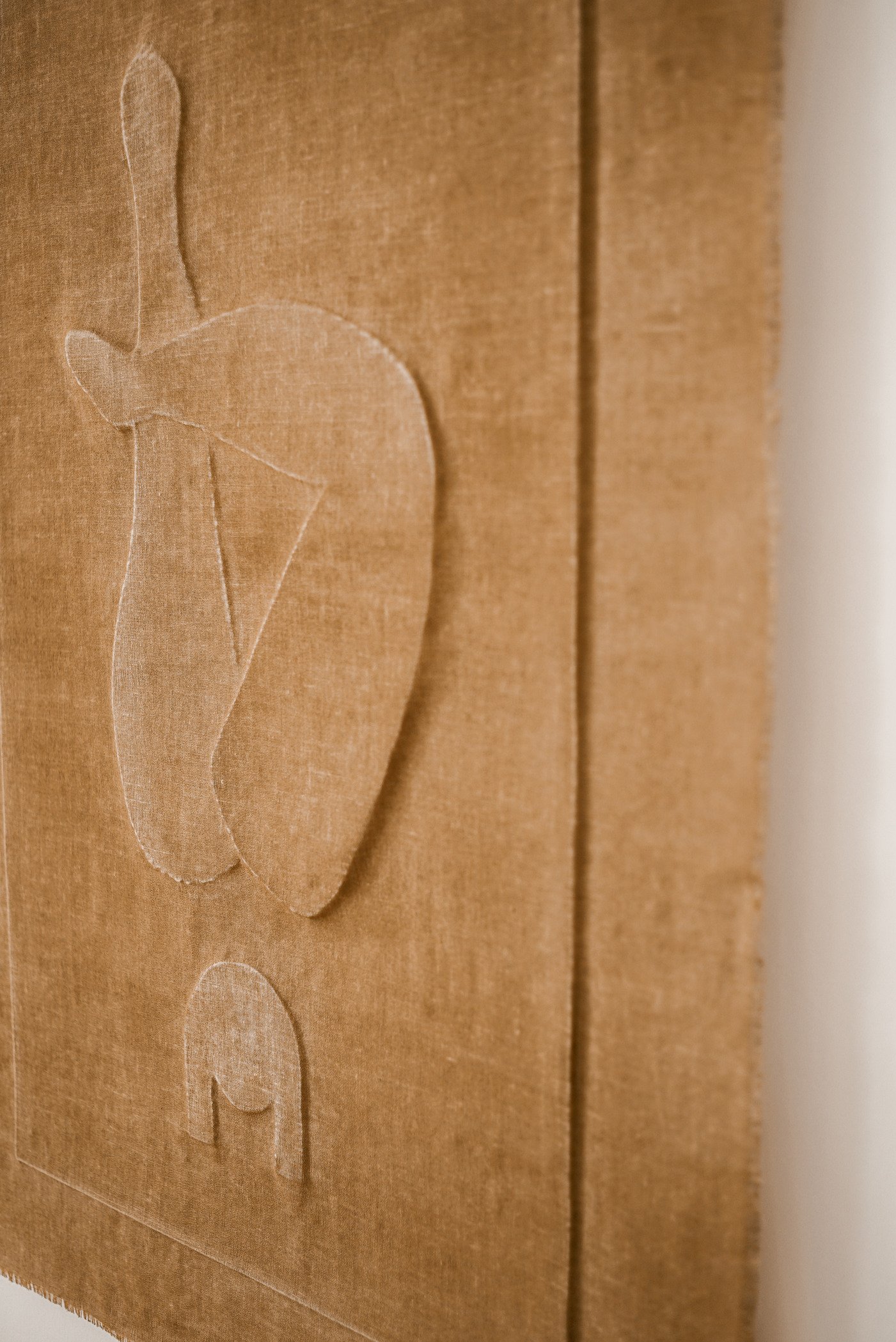


JUDGEMENT, LINEN AND SHELLAC, 112X145 CM, 2024


JUSTICE, LINEN AND SHELLAC, 112X142 CM, 2024
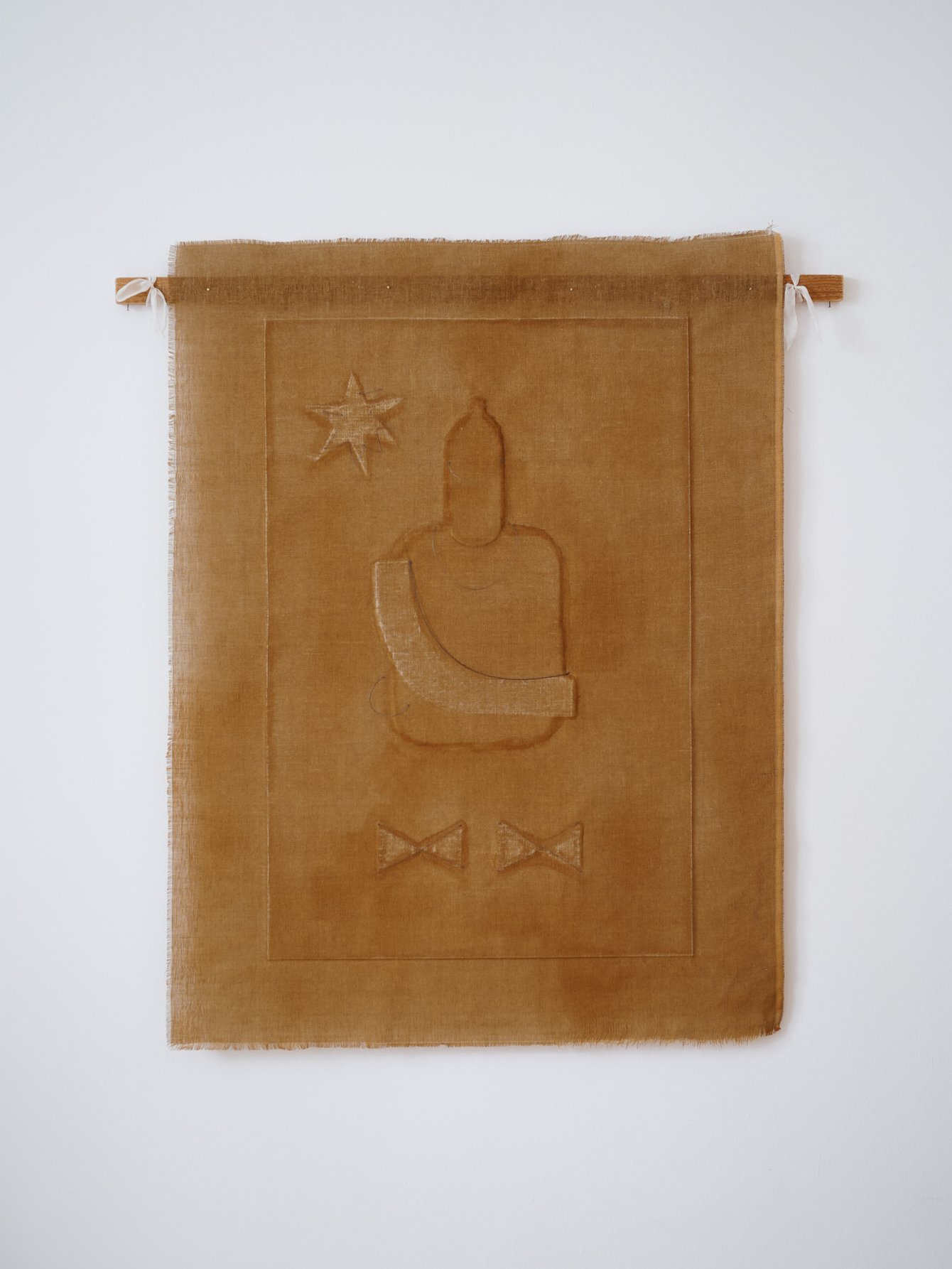
EMPEROR, LINEN, SHELLAC, METAL WIRE, 112X148 CM, 2024


TEMPTATION, LINEN AND SCHELLAC, 112X146 CM, 2024

EMPRESS, LINEN AND SCHELLAC, 112X141 CM, 2024

TREE OF LIFE
The two grand textile murals titled Tree of Life invite viewers into a contemplative journey, encouraging self-exploration and emphasising our shared connections with the natural world and the divine. A universal motif found across various cultures and traditions, the Tree of Life embodies the continuity of existence. In these works, GAÏA incorporates the rich aesthetics of folk art, where this symbol reflects both the microcosm within each individual and the macrocosm of the universe, representing a profound sense of interconnectedness and community.
TREE OF LIFE I, LINEN, SHELLAC, METAL WIRE, 262X224 CM, 2024TREE OF LIFE II, LINEN, SHELLAC, METAL WIRE, 262X224 CM, 2024Words by Alena Grigorash
PRIMAL EXPRESSION IN OCHRE-HUED SIMPLICITY
SOLO EXHIBITION ''OPEN PALM OF DESIRE'', 20 SEPT 2024SALON AM SCHWARZENBERGPLATZ, VIENNA, AUSTRIAThe exhibition “Open Palm of Desire” is a particular synergy of tactility and symbolism, where 24 textile frescoes with 3D pictograms made with shellac on linen become carriers of the sense of natural power and ancient proto-images. Each art object is a multi-layered story. This is a textile fresco, where laconic forms create deep connections with the archetypes of the major arcana of the Tarot. The linen is attached to a wooden block, which remains from old dismantled roofs from different parts of Austria. This recycled example bears the imprint of the life of the houses it once protected. The linen fabric, attached to it only from above, moves depending on the wind and the viewer moving in the exhibition space, creating a kinetic interaction. The unpainted background of the frescoes with its texture of threads creates the effect of ancient Greek “haptics”, “catching” the surface of the artist’s works with the eye. The simple, clear forms of the stars, moon and sun, human bodies and animals seem to continue the ideas of the expressionist Paul Klee’s “Elementarform”, as well as his passion for traditional Tunisian art with its spicy spirit of primitiveness. In this exhibition, GAÏA pays special attention to the images of the symbols of death and the tree of life, the emperor and empress, lovers, combining them into a cycle of “secret writings”. They are all inspired by the Tarot archetypes, which have both negative and powerful positive meanings - the energy of transformation, overcoming obstacles, deep feelings, and wisdom. This feeling of energy, as well as the primeval universality of the images, is achieved by turning to the color of the earth - ochre. According to GAÏA, the color ochre, calming and close to nature, is the ideal choice for creating a collage of clear forms. The collage technique, the paleolithic simplicity of forms, the universal power of color, the permeation of light are reminiscent of the Fauvism of Matisse. The artist's monochromes are made in her laconic style. Their universal simplicity helps the viewer to immerse themselves in the world of symbols and archetypes, helping to find their individual associations intuitively in the collective memory of feelings.
Alena Grigorash is an art historian (PhD), creative critic, and a member of the Italian FAI (Italian National Trust), AIC, and ICOM-UNESCO (International Council of Museums). 20 SEPT 2024ARTIST TALK WITH Santa GAÏA Pilens
MODERATED BY NICOLE ADLER, SHE KNOWSSALON AM SCHWARZENBERGPLATZ, VIENNA, AUSTRIANicole: You grew up in Riga, Latvia, a place with deep-rooted folk traditions. How has this shaped your artistic vision, and what aspects of your homeland still resonate in your work today?
GAÏA: Latvia holds a unique place in my personal history. It’s a land where folk traditions, nature, and the changing seasons are deeply honored, and these forces shape who you are, even without you realizing it. Midsummer is the pinnacle of the year—it’s when nature and ancient pagan rituals intertwine, connecting us to something larger. This has seeped into my work unconsciously, but now I see it clearly. My art reflects this deep connection with nature and the rhythms of the earth, but it also carries the influence of those ancestral practices that speak to identity and transformation.You've mentioned that you absorbed a lot from the artistic environment of your childhood, especially through your relationship with the work of Latvian painter Rudolfs Pinnis. Could you tell us more about how that immersion influenced your path as an artist?
Rudolfs was like a great-grandfather to me, although I was too young to truly know him when he was alive. It wasn’t until after he passed that I fully stepped into his world. I moved into his old bedroom and studio, where his presence still lingered—through his paintings, the scent of oil paints, and the books and art posters that filled the space. Living there, I absorbed not just the visual art but the intellectual and bohemian atmosphere he had created. He spent time in Paris in the 1920s, carving out his style and living that dream artists chase. It wasn’t so much about copying his artistic language but about soaking in the grandeur of his vision and the creative spirit that surrounded him.Textile has become your primary medium, especially raw linen shaped with shellac, forming what you call "contemporary mummies." What drew you to this medium, and how did this concept of "contemporary mummies" evolve?
My relationship with textile began through touch. There’s something primal about working with linen—it’s a natural material that responds to the hand. It allows me to shape and mold it intuitively. The fabric itself carries a rawness, and when I add color, it’s as if I’m layering light and shadow, bringing dimension to the piece. The term "contemporary mummies" came from the visual similarity to Egyptian mummies, but it also speaks to the concept of transformation. It’s about the tension between revealing and concealing, covering something while still exposing its essence. There’s a space for contemplation in that act—where the material becomes both a shield and a mirror for deeper reflection.You’ve described your workspace as more than just a studio—almost like a "chamber of wonders." How do you view the relationship between the objects in your studio and the narrative that runs through your work?
My studio is a sacred space. It’s not just where I create; it’s where I live within my work. Every object, every arrangement holds power and meaning. I see my art as part of a larger narrative, where everything—the atmosphere, the objects, the energy of the space—contributes to the whole. It’s like stepping into a living story. While I don’t see myself as part of the work in a performative sense, I do become part of the process. I breathe life into the space, and a bit of my energy flows into each piece. The idea of a Gesamtkunstwerk resonates with me—the concept that all elements are interconnected and together create something greater than the sum of their parts.PHOTO NURIEL MOLCHOYour current exhibition, Open Palm of Desire, is inspired by Tarot and its rich symbolism. What led you to explore the Arcane, and how do these symbols feed into the narrative of your work?
Tarot has been around me for as long as I can remember. My mother always had these beautiful card decks on the table, and as a child, I was fascinated by the visuals, though I didn’t understand the deeper meanings. It wasn’t until I found an old Tarot deck in London during a pivotal moment in my life that I began to dive deeper. I started reading, exploring the symbols, and realized I needed to interpret them in my own way. The symbolism in Tarot—those 22 archetypes—speaks to universal human experiences. My work, especially in this exhibition, taps into these symbols to explore transformation, intuition, and the layers of identity. Tarot is another form of storytelling for me, another language I use to weave narratives through my art.In recent years, there has been a resurgence of interest in mysticism and the esoteric. Why do you think this aspect of human experience is becoming more relevant again?
Mysticism looks into something timeless within us, and I think it’s becoming more relevant because people are searching for something beyond rationality. Tarot, for example, can be viewed as an unofficial Bible in that sense. Just like religion, it offers guidance when logic falls short. It doesn’t dictate our future; instead, it reflects our inner world and gives us tools for self-reflection. The magic of Tarot lies in its symbols—its ability to unlock hidden truths. "Arcana" means secret knowledge, but it’s not really secret. The archetypes reflect the human experience, and the key is in understanding and using them wisely. I think that’s what people are drawn to—the chance to reconnect with themselves through something ancient and symbolic.You've previously mentioned that "I am all the women in me," which suggests a deep connection to feminist ideas. Have these feminist concerns found their way into your work, particularly in the way you navigate the art world?
Feministic ideas are present in my work, especially, The Artist Suit diptych form my first series. It was all about female empowerment—specifically from the perspective of being a female artist in a world still dominated by masculine energy. It was a tribute to women like Georgia O’Keeffe and Frida Kahlo, who challenged conventions by wearing men’s suits in public as symbols of equality and power. The line ''I am all the women in me'' reflects that—there are layers to womanhood, and my work seeks to embody those layers. It’s a personal statement, but it’s also a universal one. We’re all multi-dimensional, and my art explores that complexity.Your show, Open Palm of Desire, evokes this idea of flow, of constantly taking in and releasing. Could you speak more about this approach and how it shapes your creative process?
My art is like an open hand—there’s a constant flow of taking in, creating, and then letting go. I don’t hold on to things. Whether it’s ideas, emotions, or even physical objects, I let them move through me. That’s where the freedom in creation lies. I take energy from the world around me, I create something out of it, and then I release it, allowing the process to continue. It’s a cycle, always in motion, and I think that’s reflected in the way my art evolves over time. Nothing is static, everything is fluid.

